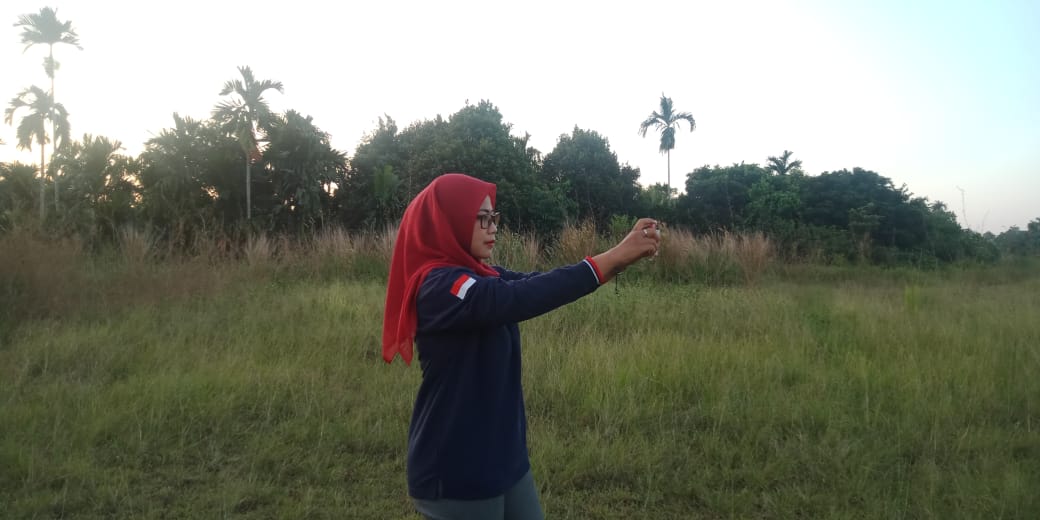Forest fires, public participation, and the role of the media: a combination of citizen journalism and community science
Forest and land fires in Indonesia are on the increase that often raise many questions. Why do fires continue to occur every year in various places throughout Indonesia? Can't they be anticipated and prevented? Who should be held responsible?
Blame and demands for accountability are often directed towards the Indonesian government, including from neighbouring countries affected by the smoke. The season or climate become a scapegoat to explain the cause of the fires, as do the community especially the Indigenous peoples who have used fire for generations. Several plantation companies were sued over forest fires
Lalu dimana letak posisi masyarakat dalam pengendalian kebakaran hutan? Bagaimana harusnya partisipasi masyarakat atau partisipasi publik yang bisa membantu mencegah terjadinya karhutla? Apakah dalam praktiknya “partisipasi masyarakat” sungguh-sungguh bisa mencegah dan mengatasi karhutla?
The power of the community
Citizen participation is citizen power, writes academic Sherry Arnstein. Arnstein describes three levels of citizen power: partnership, delegated power and citizen control
Citizen power is the distribution of power that allows citizens usually excluded from the political and economic process to be intentionally involved in shaping their future. Citizen power can enable marginalized citizens to influence social reforms or policies that allow them to benefit.
Discussions on community participation in forestry, including forest and land fire prevention, are often dominated by powerful actors such as policy makers and companies and exclude citizens. Citizens can gain power by accessing mass med.
The members of the Kanayatn Binua Sungai Manur indigenous community are examples of citizens’ use of power through mass media. Adopting the three tools of power—agenda setting, framing and priming—indigenous communities demanded rights to customary lands that have been turned into oil palm plantations (agenda setting), gained access to RuaiTV (framing), and used text messaging to share information to several officials in West Kalimantan (priming), until their demands were finally met in 2011. Thanks to training in citizen journalism, the getting parties to fulfill their demands through the power of mass media.

TempoWitness
RECOFTC and Indonesia’s magazine Tempo held a series of training sessions on monitoring forest and land fires for residents in three villages in Tanjung Jabung Barat Regency, Jambi Province. The residents who participated in the training can then submit reports to the portal TempoWitness. (https://witness.tempo.co/).
RECOFTC and Tempo targeted villagers and government staff who are residents. Because of the occupation, these residents were directly involved in monitoring and controlling forest fires but had never reported on the activities and problems encountered during fire control. RECOFTC and Tempo classify the participants as members of marginalized groups who have not been allowed to voice their suggestions or opinions on fire control. The hope following the training was that their views would be communicated through the portal and application TempoWitness for the public to understand better the dangers and challenges these marginalized groups face in controlling forest and land fires.
Using the TempoWitness application, community members who have attended the training can submit reports as video, photo, audio or text. TempoWitness will broadcast and share information sent by them to social media, putting the power of media in the hands of citizens.
RECOFTC and TempoWitness teams trained 20 residents from the villages of Muntialo, Bram Itam Raya and Bram Itam Kanan in December 2019. TempoWitness published 103 reports submitted by the residents, including 29 related to forest and land fires.
As information brokers, the 20 community members of the three villages learned how to report information using journalistic methods. They also discussed what kind of information related to forest and land fires they could report on.
RECOFTC and Tempo believe that the dangers of forest and land fires can be prevented by empowering marginalized groups to discuss the causes, obstacles and challenges they face. Connecting with Tempo and the public at large, residents are empowered by communicating their demands, such as solutions to the root causes of forest and land fires.
Community science
The use of smartphones today is nothing new. Smartphones are currently equipped with a camera to take videos and photos, a microphone to record sound, a GPS (global positioning system) to determine coordinates, a compass, a touch screen and an internet connection. In this training, RECOFTC introduced the Forest Watcher application.
The Forest Watcher mobile app features Global Forest Watch's dynamic online forest monitoring and warning system. The app allows users to monitor areas of interest, view deforestation and fire alerts, navigate to a point to investigate, and gather information about what they find. This Forest Watcher app helps residents connect with science, accessing data on deforestation and fires.
It is expected that the application will be used by fire and forest fire prevention and control groups such as the Regional Disaster Management Agency (BPBD), Manggala Agni, Forest Management Units (KPH), and the people of Muntialo, Bram Itam Raya, and Bram Itam Kanan villages.
Using the Forest Watcher app as part of the TempoWitness reporting, residents can document events, conditions, and other important information to be sent to the Tempo editor. An editor will review each report, publish and share it on social media, and citizens can share the information they submit
Tools for citizen journalism, such as TempoWitness, can be used to monitor land and forest fires, as well as forest conditions, wildlife, illegal logging, and illegal forest clearing.
It is important that residents understand the science behind fire hazards. Citizens need to be linked with scientists who will process and analyze the data collected by the information intermediaries. The Forest Watcher application can act as a liaison between citizens and scientists.
###
Harry Surjadi, is a senior journalist from Indonesia specializing in environmental reporting with more than 35 years of experience, and Gamma Galudra is the director of RECOFTC Indonesia.
[Disclaimer] The story was originally published in Bahasa Indonesia. It was translated into English and adjusted for style. The activities reported were made possible with the support of the Global Forest Watch (GFW).

